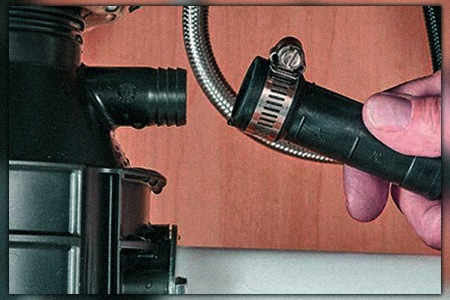The Guide to Resolving a Leak in Your Garbage Disposal
The Guide to Resolving a Leak in Your Garbage Disposal
Blog Article
How do you actually feel in regards to The Handy Guide To Fixing Your Garbage Disposal Leaking?

Garbage disposals are vital kitchen area appliances that help in getting rid of food waste efficiently. Nevertheless, a leaking garbage disposal can be an aggravating and untidy issue to handle. Thankfully, several leaks can be dealt with conveniently with a couple of easy steps. In this post, we will talk about how to fix a leaking garbage disposal efficiently.
Introduction
Waste disposal unit are installed under kitchen area sinks and are created to shred food waste right into smaller sized items, permitting it to pass through the plumbing system conveniently. While these tools are typically trustworthy, leakages can occur gradually as a result of damage, loose connections, or damages to the unit.
Typical Causes of Leakages in Trash Disposals
Worn Seals and Gaskets
Seals and gaskets play a vital function in avoiding water from leaking out of the garbage disposal. With time, these components can deteriorate, resulting in leaks around the disposal device.
Loose Links
The connections in between the garbage disposal and the plumbing system can become loosened with time, triggering water to leak out throughout operation.
Splits or Openings in the Disposal Unit
Physical damage to the garbage disposal, such as cracks or openings in the housing, can likewise lead to leaks.
Determining the Source of the Leakage
Before attempting to take care of a dripping waste disposal unit, it is essential to determine the resource of the leakage. This can commonly be done via aesthetic inspection or by performing basic examinations.
Visual Evaluation
Examine the garbage disposal system carefully for any kind of signs of water leakage. Pay very close attention to locations around seals, gaskets, and link points.
Evaluating for Leaks
One means to check for leakages is by running water with the disposal system and checking for any noticeable indicators of leak.
Tools and Products Needed for Repairing a Leaking Garbage Disposal
Before beginning the repair service process, gather the required tools and materials, including a screwdriver, adjustable wrench, plumbing's putty, substitute seals or gaskets, and epoxy or patching product for fixing fractures or holes.
Step-by-Step Guide to Dealing With a Leaking Waste Disposal Unit
Switch off the Power
Before attempting any kind of repair work, guarantee that the power to the garbage disposal system is turned off to stop the risk of electrical shock.
Situate the Leakage
Recognize the precise location of the leakage and figure out the cause.
Tighten up Links
Utilize a wrench to tighten up any loosened connections between the disposal system and the pipes system.
Change Seals or Gaskets
If the leakage results from used seals or gaskets, get rid of the old components and replace them with new ones.
Patching Splits or Openings
For splits or openings in the disposal system, usage epoxy or an appropriate patching material to secure the damaged location.
Testing the Garbage Disposal After Repair Service
Once the repair work is total, test the waste disposal unit by running water with it to ensure that the leak has been dealt with.
Preventive Maintenance Tips to Avoid Future Leakages
To prevent future leakages, it is important to execute normal maintenance on your waste disposal unit. This includes maintaining it clean, avoiding placing non-food items or difficult objects down the disposal, and occasionally checking for leaks or various other issues.
Conclusion
Finally, fixing a leaking waste disposal unit is a relatively uncomplicated process that can be completed with fundamental tools and products. By following the steps detailed in this write-up and practicing preventative upkeep, you can maintain your waste disposal unit in good working problem and avoid costly repair services in the future.
HERE’S HOW TO FIX YOUR GARBAGE DISPOSAL
WHAT TO DO IF SOMETHING IS STUCK IN YOUR GARBAGE DISPOSAL
If the impeller won’t turn, there’s probably something stuck in the disposal. It could be a steak bone or peach pit, although plumbers report pulling all sorts of inappropriate objects out of disposals, such as bottle caps or aluminum foil. Make sure power to the disposal is off, and look inside to see if you can see the source of the jam.
Never stick your fingers in a disposal. Pull out anything you see with tongs or pliers.
If the disposal still won’t work, it may be time to call a plumber or consider buying a new disposal. GEM Plumbing & Heating is here for all of your garbage disposal needs.
WHAT TO DO IF YOUR GARBAGE DISPOSAL DRAIN IS CLOGGED
Take everything out from underneath your sink and put a bucket or other container under your disposal to catch any water that drains out. Disconnect your disposal from the power supply. If it’s plugged into a wall outlet, unplug it. If it’s hardwired into an electrical box, go to the electrical panel and turn off the breaker for the disposal. Pour ¼ cup of baking soda into the drain, followed by ½ cup of white vinegar. Give the solution a few minutes to fizz and do its work. Look into the disposal with a flashlight to see if you can see an object that might be causing the clog. If you see it, remove it using tongs or pliers. MORE TIPS ON DEALING WITH A CLOGGED GARBAGE DISPOSAL
Never use drain cleaner in a garbage disposal. It can damage the plastic parts inside the disposal. You can also be splashed with the caustic liquid while working to clear the clog. Beware! Never stick your fingers into a garbage disposal. Trust us — not a good idea. In many instances, your dishwasher drains through your garbage disposal. This allows the disposal to grind any large food particles that may be drained out of your dishwasher. There are some jurisdictions, however, where the plumbing code prohibits such a connection. WHAT TO DO WHEN YOUR DISHWASHER DRAINS THROUGH THE DISPOSAL
Run some water in the sink so your plunger has at least a ½-inch of water to create a seal and plunge vigorously up and down several times. You may need to repeat this several times. Run hot water down the drain to clear any residue that remains.

I am very fascinated by Why Is and I really hope you enjoyed the post. Make sure you take the time to distribute this article if you appreciated it. I praise you for your time. Visit again soon.
Request An Appointment Report this page